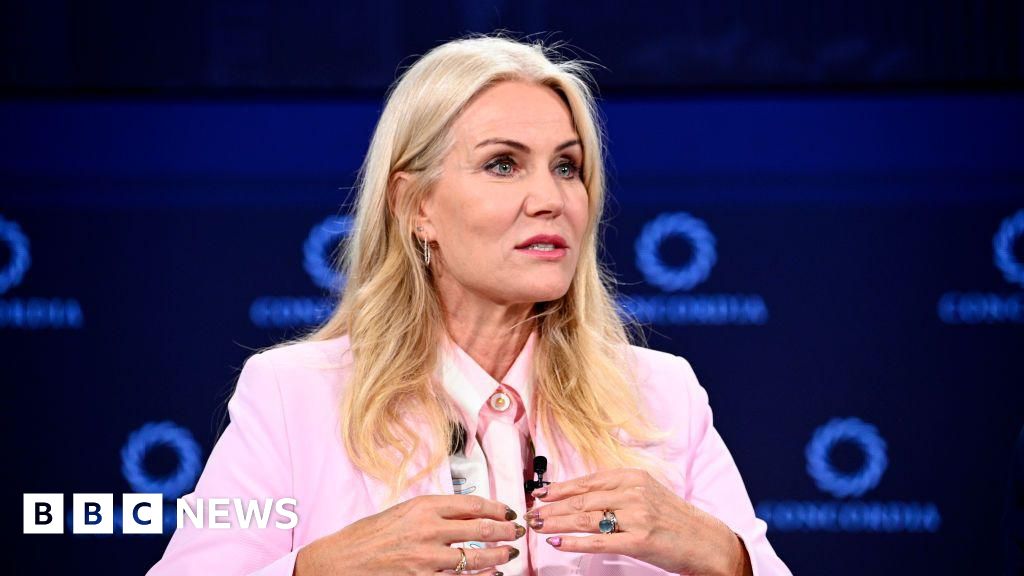ARTICLE AD BOX
By Christine Ro
Technology of Business reporter
image source, Getty Images
image captionIt can be hard for customers to tell which products are PFAS-freeTake a look around your home, at the many products that make daily life more convenient. Have you ever wondered why food doesn't stick to your favourite frying-pan, why grease doesn't soak through your bag of microwave popcorn, or why water doesn't soak into your jacket?
The same class of synthetic chemicals, PFAS, is likely responsible for all of these functions. But those chemicals are now under the spotlight and, in some regions, are being phased out altogether.
The group of chemicals known as PFAS (poly- and perfluoroalkyl substances) is enormous. There are over 4,700 of these fluorine-based compounds.
Often dubbed "forever chemicals" for their extraordinary persistence, they've been detected in drinking water, dust and even the human bloodstream.
You almost certainly have PFAS in your home and in your body.
As depicted in the 2019 film Dark Waters, health problems can be especially severe in areas of land where PFAS are disposed of, or heavily used.
image source, Getty Images
image captionPFAS were at the centre of the 2019 film Dark Waters starring Mark RuffaloThese chemicals, found in a dizzying array of products - from food-packaging, to cosmetics and furniture - have been linked to health problems including liver damage, kidney cancer and birth defects.
Consumer pressure alone however, hasn't been enough to drive major movement away from PFAS.
After all, deciphering labels and the names of chemical compounds is nearly impossible for the average person, notes Jonatan Kleimark, a senior chemicals and business advisor for ChemSec, a Swedish non-profit organisation advocating for safer use of chemicals.
"If you're a regular consumer, it's a very complex subject, and it's something that's usually not communicated around," Dr Kleimark says.
Not everyone has the time and motivation to write to manufacturers to ask if their products contain PFAS, which is what some government agencies advise.
Even some manufacturers may not realise that they're using PFAS in their products.
"If you really want change, then you need regulation, because that's what companies will actually act upon," Dr Kleimark comments.
"Even the thought of having a PFAS restriction makes companies understand that this is something that they have to really work with, to find alternatives."
Those restrictions are limited so far. In July, the US state of Maine became the world's first jurisdiction to ban the sales of PFAS-containing products, effective from 2030. The exception is where use of PFAS is deemed unavoidable, which might apply to certain medical products.
EU countries have restricted certain types and uses of PFAS. But environmental campaigners and certain European governments are calling for PFAS to be regulated as a group.
The also want manufacturers to supply more information about what alternatives they're using. Taking a piecemeal approach is too slow and allows for too many harmful substitutions, they argue.
"I definitely think that there will be some kind of restriction in the next five, six years," Dr Kleimark predicts.
Members of the chemical industry are seeking further consultation and guidance in order to make this transition successfully.
Cefic (The European Chemical Industry Council) also wants more clarity about what counts as essential use for PFAS.
image source, Ikea
image captionIkea has eliminated all PFAS from its furnitureFinding alternatives has been easier in some industries than others. "The textile industry has been in the forefront of finding alternatives," Dr Kleimark says.
Yet some companies have been swapping out PFAS-containing materials for others that are better for human health but still harmful to the planet, such as plastic-based clothing.
One innovator is OrganoClick, a Swedish company aiming for more sustainable use of chemicals. Their product OrganoTex is an alternative to PTFE, a type of PFAS commonly used in water-repellent clothing.
PTFE, better known as Teflon, has been a very useful chemical since DuPont patented it in 1941. PTFE is hydrophobic, so it repels water from fabric; it's also used in non-stick coatings because it can handle relatively high heat and has low friction.
PTFE is so handy that NASA began applying it to space suits and heat shields in the 1960s.
However, Mårten Helberg, the president and CEO of OrganoClick, argues that we don't actually need this jack-of-all-trades chemical for specific uses like helping jackets withstand rain.
Unlike astronauts, who might need their materials to resist water, oil and other substances, most consumers would generally "just be outdoors; you will not have oil rain", as Mr Helberg puts it.
image source, Organotex
image captionOrganoTex mimics the properties of lotus leaves, which are naturally water repellentOrganoTex mimics the properties of lotus leaves, which are naturally water-repellent. If you've ever seen droplets glide off the surface off a lily pad or a cicada's wing, you'll have seen this hydrophobicity in action.
"We use naturally occurring water-repellent molecules" that easily biodegrade, Mr Helberg says, instead of synthetic chemicals that stick around forever.
The OrganoTex line includes sprays, waxes and detergents that keep textiles water-repellent through 5-10 washes (if end consumers apply the treatment themselves), or 20 washes (in industrial products), according to Mr Helberg.
PTFE is also found in non-stick cookware. According to the Ecology Center, a US environmental non-profit, a pan labelled PTFE-free probably won't contain PFAS. Yet, many products claiming to be both green and non-stick may be neither.
Cast-iron, stainless steel and ceramic non-stick pans may be more expensive than some coated pans, but they're likely to last longer, as well as being safer.
image source, Christine Ro
image captionGreenpan is one of the companies specialising in PFAS-free pans"Part of the problem has been that the consumer needs to understand that they don't get exactly the same product…it's a different technology, and maybe you need to treat this frying pan in a slightly different way than the regular Teflon pan that you used to have," Dr Kleimark says.
This might involve learning a different method for cleaning, or seasoning a pan. "Even if it doesn't have to be that much harder or that much more work, but it's still challenging to get the consumers to buy in."
We'll also have to learn how to handle alternatives to many other PFAS-containing items, such as firefighting foams. Non-PFAS products perform differently to PFAS-containing aqueous film-forming foam (AFFF) when fighting gas and oil fires, but non-PFAS foams are already used around the world.
Shari Franjevic is the programme manager for GreenScreen, which certifies products as free of PFAS and other chemicals. "In countries where PFAS-free products are allowed, for use at airports, for example, the products are being purchased and users are satisfied with the performance, e.g. London Heathrow," Ms Franjevic says.
"We understand that while PFAS-free products perform differently than PFAS-containing products, they are capable of meeting the performance needs in most, if not all, situations."
From firefighting foams to outdoor clothing, because PFAS varieties are used in so many ways, a plethora of alternatives will be needed to replace them, Dr Kleimark says. "We need a lot of research for all the different uses."

 3 years ago
102
3 years ago
102








 English (US) ·
English (US) ·